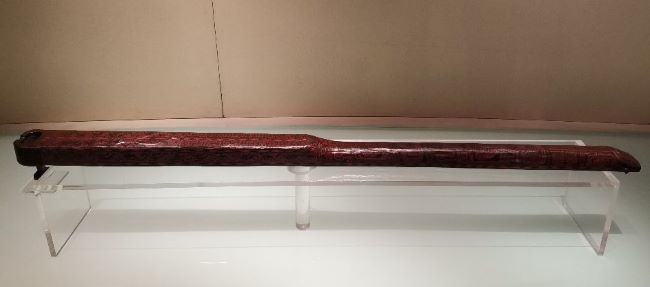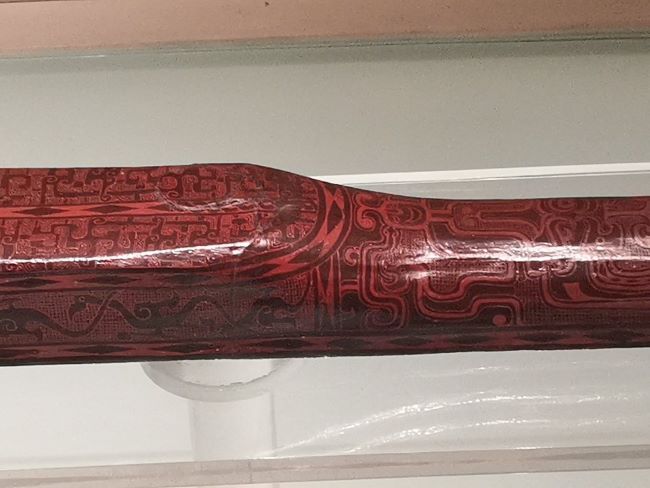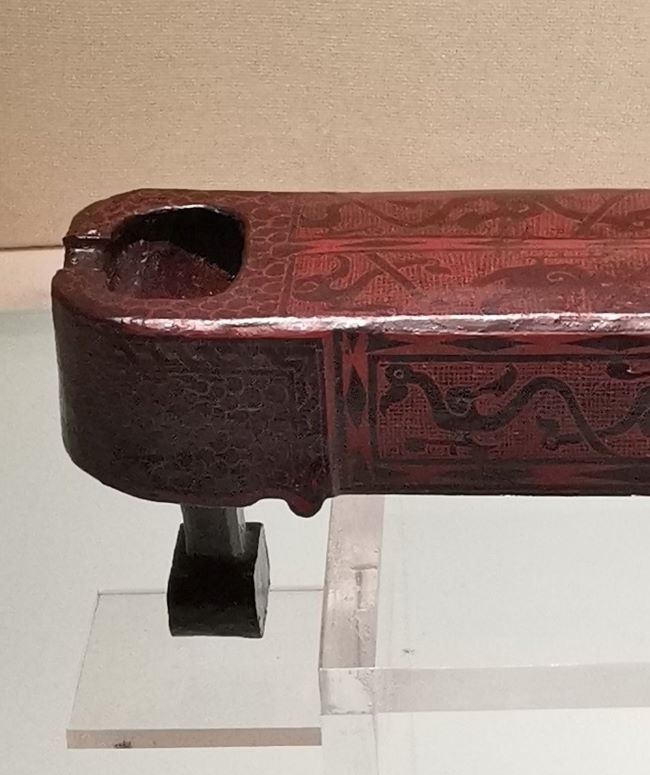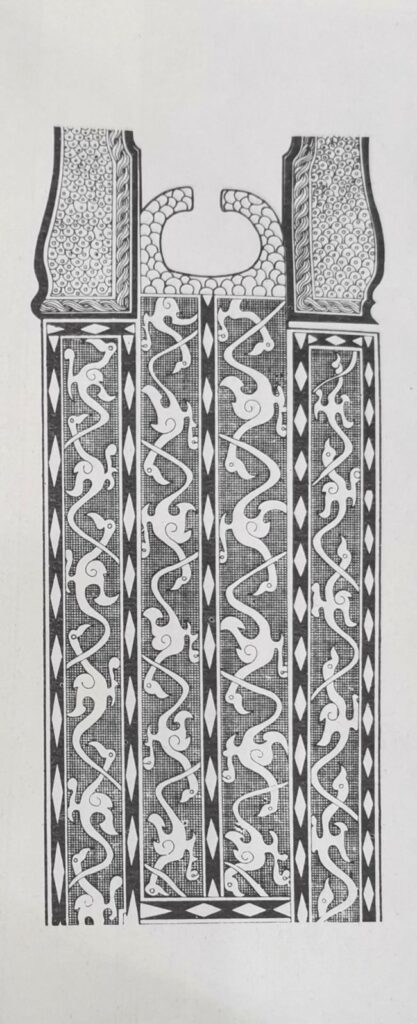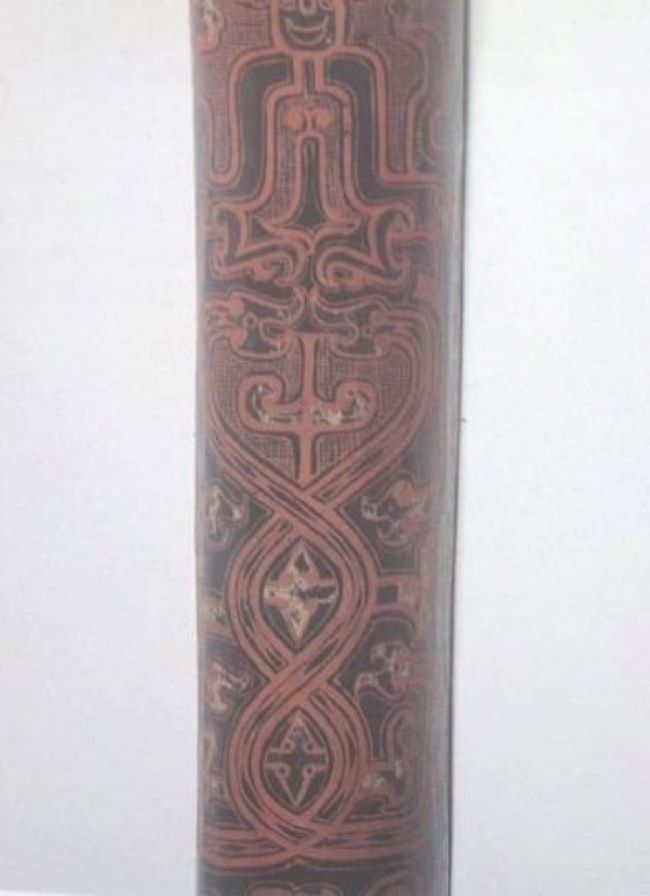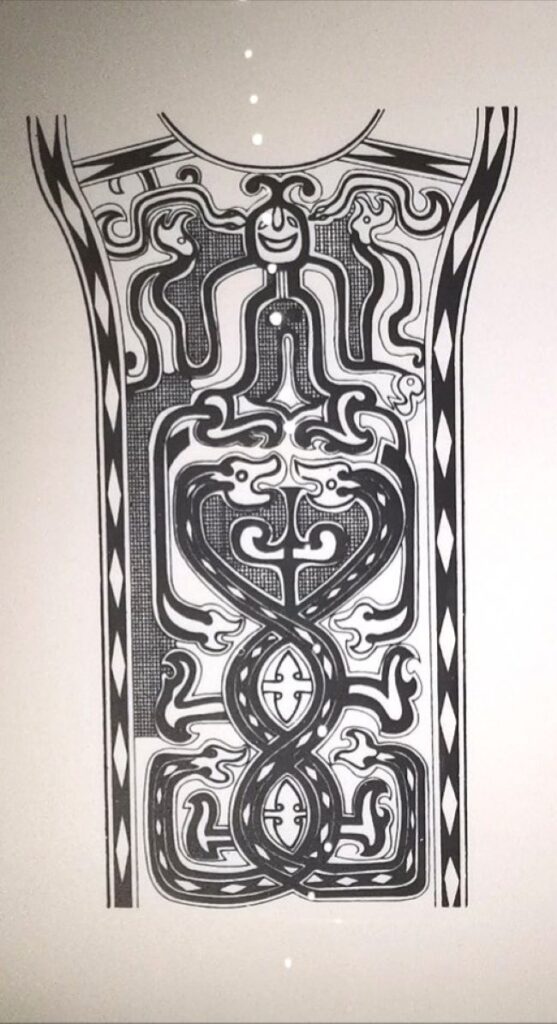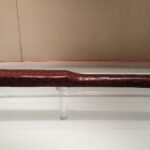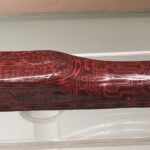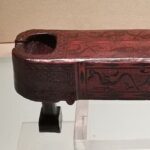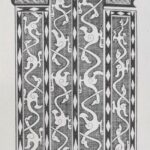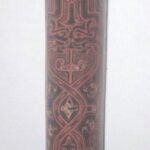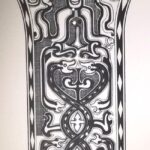Artefacts
Jun Zhong (均钟)
Jun Zhong (均钟)
The body of the vessel is painted with divine figures riding dragons ascending to heaven and images of twelve phoenixes. According to legend, Emperor Qi of Xia ascended to heaven to acquire music, and the emperor ordered Ling Lun to imitate the phoenix birds to establish the twelve musical notes. The pictures that rise might represent "Emperor Qi Obtaining Music" and "Ling Lun Making Music," which are related to the musical system.
On the back and sides of the first section of the body and on the front of the tail section, the images consist of a group of phoenixes with arched necks and flapping wings flying over a dense grid pattern.
On the panel, there are two rows of phoenixes, with one side panel featuring a row of twelve (the other side panel has eleven), and the two rows of phoenixes on the bottom panel also total twelve.
Description
In the 1970s, a peculiar five-stringed instrument was unearthed from the early Warring States period tomb of Marquis Yi of Zeng in Suizhou, Hubei(湖北随州). Evidence points to its use as a tuning device. See also the monograph and sonometer for comparison.
This lacquered wooden artifact was well-preserved except for the strings, which had decayed over the past 2400 years. Its unique form, an elongated bar-shaped body measuring 115 cm with a resonating box and five string holes, resembles a quint-chord musical instrument. Yet, its narrow panel (only 7 cm at its widest) and string spacing of about 1 cm seem impractical for playing. Found in the eastern chamber of Marquis Yi’s tomb, the closest to the tomb owner, its placement signifies its importance.
The five-stringed instrument is coated in black lacquer with red and yellow decorative paintings, showcasing extreme ornateness. Most notable are the depictions of divine figures riding dragons on the back of the instrument. Scholars believe these represent the image of “Emperor Qi Riding Dragons.” According to the “Classic of Mountains and Seas,” Emperor Qi, the son of Yu, rode dragons to heaven three times, acquiring the divine music pieces “Nine Changes” and “Nine Songs,” bringing celestial music to earth, marking the legendary origin of “music.”
Additionally, the instrument is adorned with five sets of phoenix patterns, each consisting of twelve birds. According to Lü Shi Chun Qiu (Lü’s Commentaries of History on Ancient Music), it is recorded that Ling Lun, the music official during Emperor Huang’s reign, differentiated the twelve musical tones by listening to the phoenix’s calls. Ling Lun established the twelve temperament of music by referencing the twelve different sounds of the phoenix, which is the legendary origin of “musical temper.”
Incorporating the origins of “music” and ” musical temper” into the designs on such a small artifact implies significant symbolism. Music historians, through mathematical analysis and combining studies of literature and patterns, suggest that this “five-string” is not a musical instrument but rather the “Junzhong” mentioned in ancient texts like “Discourses of the States” – a standard for tuning bells.
The world-renowned Zeng Houyi bronze bells prove that China had the technology of twelve temperament and the “dual tones from a single bell” over 2400 years ago. However, after casting, the metal bells’ pitch was not accurate, requiring fine-tuning. The standard instrument used for tuning was the Junzhong. During tuning, craftsmen would play the anticipated pitch on the Junzhong and strike the bell embryo to produce sound, comparing the two tones by ear. They would then meticulously grind the inner wall of the bell embryo with a sharp stone to tune the pitch, a process repeated until the desired effect was achieved, Very similar to the way of modern piano tuning.
The Junzhong, an ancient Chinese acoustic instrument, was at least used in the courts of the Zhou Dynasty and was lost during the Qin and Han Dynasties. The Junzhong unearthed from the tomb of Marquis Yi of Zeng is the only one known to exist and is a national first-class cultural relic in China.
Dimensions: Length:115cm, head width: 7cm, height: 4cm; tail width: 5.5cm, height: 1.4 cm
Condition: Except for the strings, which are rotten and gone, the artifacts are in fair condition.
© 2015 – 2025 Humboldt-Universität zu Berlin

